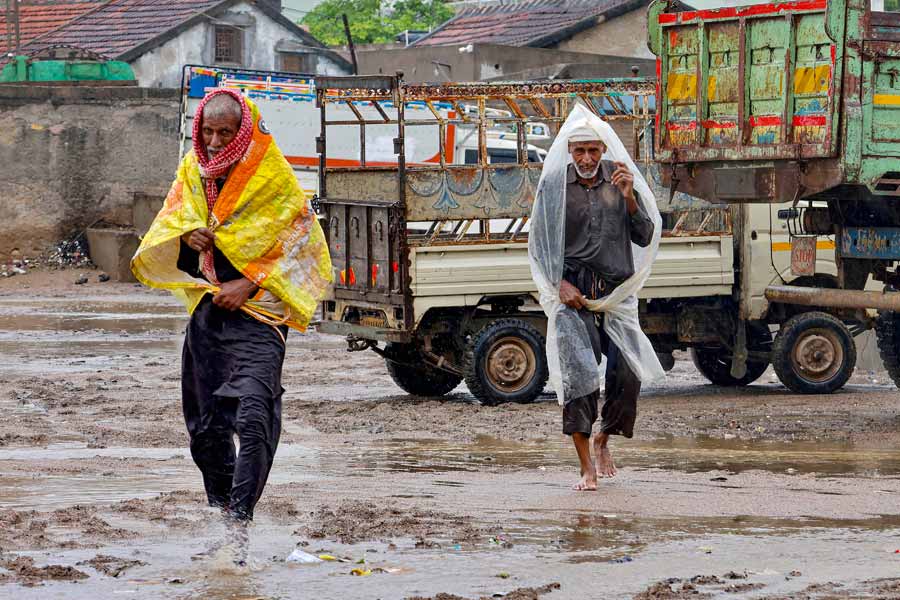Social link
Sir — Social media has replaced neighbourhood tea stalls as the popular place to spread malicious gossip. But every now and then, it is harnessed for nobler causes. Take, for example, Koel Mallick’s social media post on Bhai Phonta. The actress shared several photographs of her visit to a psychiatric facility run by a non-governmental organisation in Calcutta; some of these featured Sujoy Mandal, a mentally challenged youth, who had disappeared from his village in Murshidabad. The images were eventually seen by his family members who contacted the NGO using Mallick’s post as a reference to reunite him with his mother. This shows that even in the age of reels, social media can be used for what it had originally been invented to do — connect people.
Anjan Poddar, Calcutta
Rap on the knuckles
Sir — The Centre’s defiance of the orders passed by the Supreme Court collegium regarding the appointment and the transfer of judges is deplorable (“SC raps Centre for ‘selective’ judge transfers”, Nov 21). Such disrespect of the judiciary by the executive is unprecedented. The collegium system has stood the test of time and its recommendations should be implemented without delay. The Supreme Court should come down strongly on the government for violations of the collegium’s orders.
Arun Gupta, Calcutta
Sir — The tussle for power between the Supreme Court and the Centre seems to be intensifying with each passing day. Resistance is perhaps the strategy adopted by the Bharatiya Janata Party-led government to try and browbeat the Chief Justice of India. A two-judge bench has thus rightly admonished the Centre for the ‘selective’ clearance of the collegium’s recommendations. If the conflict persists, it will destroy the congenial rapport that should exist between the two branches of the State.
K. Nehru Patnaik, Visakhapatnam
Sir — In yet another hearing regarding the Centre’s inconsistency in clearing the transfer of judges recommended by the judicial collegium, the Supreme Court came down heavily on the government’s “pick and choose” policy, asking why the transfer of four judges from the Gujarat High Court had not been cleared. While ministers in the government have previously attacked the collegium system, the apex court, too, has repeatedly been forced to prod the Centre into passing the orders for the transfer and the appointment of judges without delay. Perhaps the judiciary should now implement a system that can force the Centre to clear the recommended names within a stipulated 24-hour period.
Khokan Das, Calcutta
Malicious entity
Sir — The criticism by the prime minister, Narendra Modi, of the misuse of technology to create deepfakes is justified (“Modi flags deepfake ‘crisis’, Nov 18). In response to the threat posed by deepfakes of public figures, governments around the world have started to explore legal measures and technological solutions. Laws should also be enacted in India to combat the creation and the dissemination of malicious deepfake content.
S.S. Paul, Nadia
Sir — It is heartening that the critical issue of deepfake content is being addressed by the prime minister. Deepfake videos, especially those targeting celebrities, are often aimed at people with poor digital literacy. People should be made aware so that they do not click on such content and immediately report malicious videos or pictures to the authorities.
Manoj Kumar Thampi, New Delhi
Sir — The prime minister’s recent acknowledgement of the menace of deepfake content is significant. The capacity of deepfakes to present convincing visual content despite being fabricated is exemplified by several videos of actresses that are doing the rounds. The potential of deepfake videos to spread chaos is alarming. Raising awareness about such manipulated content is thus crucial.
Maimul Safui, Howrah
Spoilsport
Sir — The editorial, “Crass crowd” (Nov 21), puts forth a pertinent point. The behaviour of the Ahmedabad crowd during the World Cup final showed that the nation is still mired in petty parochialism. A cricket match is a form of entertainment and even opponents should be lauded if they play well. The Australian team played excellently. Spectators at the Narendra Modi Stadium should have been gracious in defeat.
Aranya Sanyal, Siliguri
Sir — The insensitive behaviour of the Ahmedabad crowd during the World Cup final could have been due to the fact that it had expected an easy victory for India and could not stomach such a comprehensive defeat. Had the final been portrayed as an equal contest, the loss would not have been so difficult to bear. Immense political capital had also been spent on transforming the final into a showpiece event, with little consideration for the fact that cricket is a game of uncertainties and either team could win. The spectators’ biased behaviour is a reflection of the shallow patriotism that has pervaded the nation in recent years.
P.K. Sharma, Barnala, Punjab
Sir — The editorial, “Crass crowd”, hits the nail on the head. In the World Cup final, Australia proved that they were the better team on the day and deservedly won the title. The behaviour of the Ahmedabad crowd was disgraceful not only to the spirit of cricket but also to the nation. The booing of the on-field umpires during the presentation ceremony was reprehensible. I remember that during a 1999 tournament, the crowd at the Chepauk had applauded the performance of the Pakistani team even though India had lost.
N. Mahadevan, Chennai










